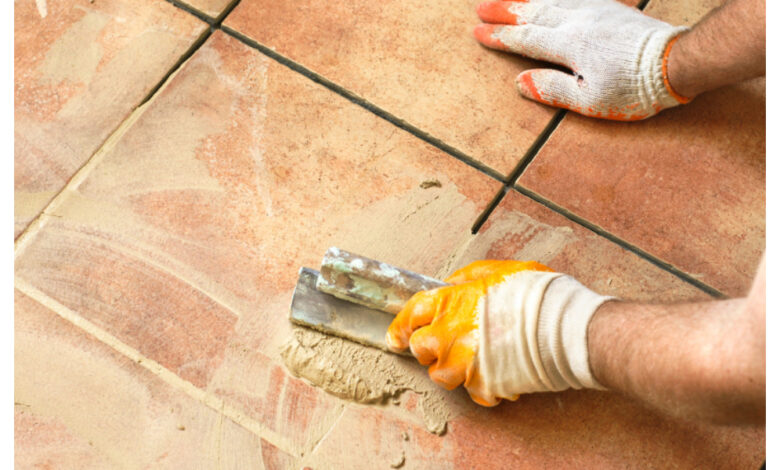Common Mistakes to Avoid When Applying Grout Sealer

One of the most critical steps in shielding tiled surfaces against moisture, stains, and degradation is applying grout sealer. However, poor application might result in expensive repairs and inefficient sealing. Understanding the most common mistakes made with grout sealers in Singapore will then help ensure a successful sealing process and long-lasting results.
8 Errors to Avoid When Applying Grout Sealer
1. Not Cleaning the Grout Properly Before Sealing
One of the most common mistakes when applying grout sealer is failing to clean the grout thoroughly. Any dirt, grease, or soap scum left on the grout can prevent the sealer from adhering properly. Scrubbing the grout lines with a pH-neutral cleaner and allowing them to dry completely is necessary before applying a tile grout sealer. If moisture or contaminants are trapped under the sealer, it can lead to discolouration and poor protection.
2. Applying Sealer on Wet or Damp Grout
Grout must be completely dry before applying a sealer. Applying grout sealer on damp grout prevents proper absorption and can lead to uneven sealing or peeling over time. It is recommended to wait at least 24 to 72 hours after installing grout before sealing. It may take longer for grout to dry in humid climates due to moisture in the air. Perform a moisture test by placing a paper towel over the grout line if unsure; if it absorbs moisture, the grout is not ready for sealing.
3. Using the Wrong Type of Grout Sealer
Not all grout sealers work for every application. Choosing the wrong sealer can result in weak protection or unnecessary maintenance issues. There are penetrating sealers, which absorb into the grout and offer long-lasting protection, and surface sealers, which create a barrier on top. A penetrating polyurethane grout sealer is a better option if the goal is to prevent moisture absorption in high-traffic or wet areas. A standard tile grout sealer may suffice for areas with minimal exposure to moisture.
4. Skipping the Second Coat When Necessary
Some grout sealers require multiple coats for maximum effectiveness. Many people make the mistake of applying just one coat and assuming the job is complete. If a tile grout sealer recommends two or more coats, follow the instructions carefully. The first coat is absorbed quickly, while subsequent coats provide an additional layer of protection. Waiting for the recommended drying time between coats ensures proper penetration and durability.
5. Overapplying or Underapplying Sealer
Applying too much grout sealer can cause a sticky residue that is difficult to remove while applying too little will not provide adequate protection. The key is to use just enough sealer to saturate the grout without leaving excess on the tile surface. Wipe off any excess sealer from the tiles within a few minutes to prevent streaking or cloudiness. Using a small applicator brush, roller, or sponge allows for better control and even application.
6. Not Wiping Off Excess Sealer from Tiles
A common issue occurs when excess grout sealer is left on the tile surface and dries, leading to a hazy or sticky residue. This mistake is more noticeable on glossy tiles, where dried sealer can dull the finish. After applying the grout sealer, wipe the tiles with a clean, dry cloth within 5 to 10 minutes to prevent residue buildup. A mild solvent or sealer remover may be needed to clean the surface if a dried sealer is already present.
7. Ignoring the Curing Time
Grout sealer needs time to cure before exposure to water or heavy foot traffic. Many people make the mistake of using the area too soon after sealing, which can compromise the sealer’s effectiveness. Depending on the type of sealer used, curing times can range from 24 hours to 72 hours. It is best to allow extra time for the sealer to fully set before regular use, particularly in places where humidity levels are high.
8. Forgetting to Reapply Sealer When Needed
Grout sealers do not last forever and need reapplication over time. Some high-quality penetrating sealers can last for several years, while others require reapplication every 6 to 12 months, especially in high-moisture areas. Many homeowners forget this step, leading to weakened grout that absorbs dirt and moisture. Conduct a simple water test by sprinkling a few drops of water on the grout; if the water absorbs quickly instead of beading up, it is time to reapply the sealer.
Conclusion
Proper grout sealing enhances the durability and appearance of tiled surfaces, but mistakes during the application process can reduce its effectiveness. Make sure the grout is clean and dry before sealing, select the appropriate tile grout sealer, apply it carefully, and give it enough time to cure to guarantee long-lasting results. Regular upkeep and reapplication are also required to keep protection. Both experts and homeowners may optimise the advantages of grout sealing, particularly in difficult environments, by avoiding these typical blunders.
Contact Grout Pro-Tech to find the best grout sealer for your needs.

